#feed pellet mill
Text
8-12T/H Feed Mill Plant Installation in Ethiopia
Ethiopia is a country where agriculture serves as a primary economic pillar, with poultry and cattle playing significant roles in agricultural production. Poultry and cattle farming are major sources of livelihood for farmers and important economic sources for many households in Ethiopia.
In Ethiopia, poultry and cattle farming are primarily concentrated in rural areas. Farmers raise chickens and cattle to meet their families' food and economic needs. Chicken meat and eggs are among the main sources of protein for the Ethiopian people, while cattle provide important products such as milk, meat, and leather.
However, despite the potential and importance of poultry and cattle farming in Ethiopia, the industry still faces several challenges, including:
1. Lack of infrastructure: Many rural areas lack adequate poultry and cattle farming infrastructure, such as feed processing plants, veterinary clinics, and refrigeration facilities, which limits the development of the industry.
2. Diseases and epidemics: The poultry and cattle farming industry is threatened by diseases and epidemics such as avian influenza and cattle plague, which have significant impacts on production and the economy.
3. Shortage of feed supply: Feed supply shortages are another challenge for Ethiopia's poultry and cattle farming industry. Farmers often face problems such as rising feed prices and unstable supply.
However, the Ethiopian government and international organizations are taking measures to support the development of poultry and cattle farming. By providing technical training, improving infrastructure, strengthening disease surveillance, and promoting farmer organizations, efforts are being made to address the challenges faced by the industry, promote its sustainable development, and provide better livelihoods and economic opportunities for farmers.
youtube
Our company has successfully provided a poultry and cattle feed production line with a capacity of 8-12T/H for a client in Ethiopia. After over 60 days of careful preparation and production, the poultry and cattle feed production line is fully prepared for operation. This is a challenging and significant project, and at every stage, we have focused on meeting the client's needs and providing the best solutions and services.

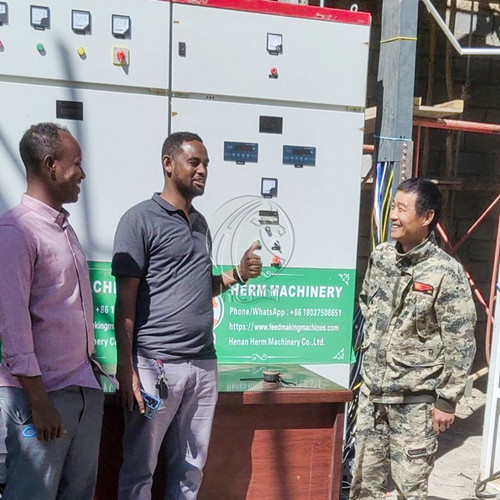
After the successful production and delivery of the poultry feed production line, we immediately organized a team of two experienced engineers to assist the client with the installation and commissioning of the production line. These engineers not only have solid technical knowledge and rich practical experience but also excellent communication and teamwork skills, enabling them to work closely with the client to address various technical and operational issues.
During the installation process, the engineers prioritized quality and efficiency, conducted a comprehensive assessment of the site conditions, formulated detailed installation plans for the poultry and cattle feed production line and discussed with the client and liaison personnel to ensure that the installation work proceeded smoothly. For possible shortages of tools and manpower, the engineers prepared detailed lists in advance and communicated extensively with the client to ensure that the required resources were available promptly.


During the installation process, the engineers prioritized quality and efficiency, conducted a comprehensive assessment of the site conditions, formulated detailed installation plans for the poultry and cattle feed production line and discussed with the client and liaison personnel to ensure that the installation work proceeded smoothly. For possible shortages of tools and manpower, the engineers prepared detailed lists in advance and communicated extensively with the client to ensure that the required resources were available promptly.
youtube
It is worth mentioning that during the installation process, we actively communicated and cooperated with local governments and media. The local government attached great importance to our poultry and cattle feed production line project and organized visits to provide full recognition and approval of our technical and management capabilities. At the same time, the local media extensively covered our project, bringing more exposure and publicity to our brand and business.

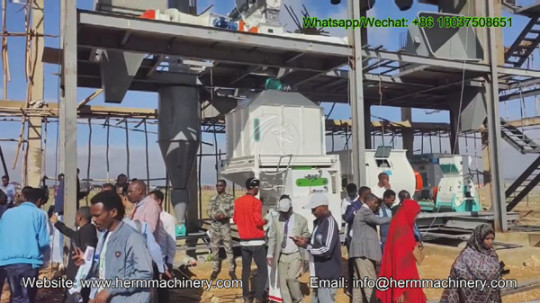

Henan Herm Machinery Co., Ltd was established in 2010 and has been devoted to the research and development of Feed Mill Machinery ever since. With more than 10 years of experience, Herm® has become a leading manufacturer and supplier of animal feed machines and complete animal feed production lines, cattle feed plants, poultry feed plants, animal feed pellet production lines, etc. It always endeavored to improve the quality of products and aims to meet the new requirements of the international market.
If You Are Ready to Start a Feed Pellet Plant Business, please contact us for the feed mill machine. We Can Provide Professional Design and Comprehensive Guidance According to Your Needs. Get in touch with us now!
Welcome Contact Us!
Henan Herm Machinery Co., Ltd
Email: [email protected]
Phone/Whatsapp: 86-18037508651
0 notes
Text
How to ensure the pellet quality and pellet shape of feed pellet mill
The pellet quality and pellet morphology of feed pellet mill are important factors affecting the feed processing quality and nutritional value. In the feed processing industry, how to ensure the pellet quality and pellet shape of feed pellet mill has become a topic of great concern. This article will explore it from multiple aspects in order to provide some useful references and suggestions for related industries.
First of all, ensuring the particle quality and particle morphology of feed pellet mills needs to start with the design and manufacturing of the equipment itself. A high-quality feed pellet mill should have reasonable structural design and sophisticated manufacturing technology to ensure that the pellet machine can complete the pelletization work stably and efficiently during operation. At the same time, the mold design and manufacturing of the pellet machine are also crucial. The quality and accuracy of the mold directly affect the shape and quality of the pellets. Therefore, manufacturers should pay attention to these details when designing and manufacturing feed pellet mills to ensure the stability and reliability of the equipment.
Secondly, the guarantee of particle quality and particle morphology of feed pellet mill also needs to rely on scientific and reasonable granulation process. During the production process, operators should reasonably select the working parameters of the pellet machine based on different raw material characteristics and processing requirements, such as the pellet machine's rotational speed, feed speed, mold pressure, etc., to ensure that the pellet machine can evenly and fully process the raw materials. Pressed into ideal granular form. In addition, for some special raw materials, such as raw materials with high moisture content, operators need to carry out appropriate pretreatment according to the actual situation to ensure that the pellet machine can work normally and ensure the quality of the pellets.
In addition, the guarantee of particle quality and particle morphology of feed pellet mill also needs to rely on strict quality control and testing methods. During the production process, manufacturers should establish a complete quality management system and conduct comprehensive monitoring and testing of raw materials, production processes and finished products to ensure that each batch of granules produced meets relevant quality standards and requirements. At the same time, manufacturers should also establish a complete after-sales service system, promptly respond to customer needs and feedback, and handle and improve some quality issues in a timely manner to improve the overall quality level of the pellet machine.
In addition, the guarantee of feed pellet mill pellet quality and pellet morphology also needs to rely on the formulation and implementation of industry standards and specifications. Relevant industry associations and organizations should strengthen the standardization work of feed pellet mills, formulate relevant evaluation standards for pellet quality and pellet morphology, and handle and rectify products that do not meet the standards accordingly. At the same time, industry associations and organizations should also strengthen supervision and guidance of feed pellet mill manufacturers and users, and promote the entire industry to develop in a more standardized and standardized direction.
In short, ensuring the particle quality and particle morphology of feed pellet mills is a comprehensive project that requires the joint efforts of feed pellet mill manufacturers, operators, industry associations and organizations. Only through continuous technological innovation and management innovation can we better ensure the particle quality and particle shape of feed pellet mills and provide better support and guarantee for the development of the feed processing industry.
0 notes
Text

Celebrating the colors of unity, freedom, and pride this Republic Day! ✨🎉
Stay tuned for captivating animal feed machine designs at https://www.cremach.in/
#happy republic day#26th january#republic day 2024#farmers#agriculture#animal feed#cattle feed#india#fish feed#pellet mill#cremach#manufacturing
0 notes
Text
The animal feed mill use pellet feed product cooling machine, new design counter flow cooler
0 notes
Text
@moony-ghoul’s post got me thinking about a farm au where the ghouls live in a big farmhouse in the countryside :3
they grow crops in the fields and have a herd of cows, a herd of sheep up in the nearby hill, horses in the stables and a big ol’ chicken coop. they make their living by selling their milk/butter/eggs to the nearby town and every day dew is up before the sunrise to milk the cows. he and mountain pass each other and share a quiet, sleepy conversation and a kiss when they pass each other on their way to their respective tasks (dew to the barn for the cows, and mountain to the stables to ready the horse and cart for his daily milk run)
aeon has a soft spot for the chickens so rain and cirrus are teaching him how to take proper care of them. he was entirely horrified when he first learnt that he needs to feed the chickens their own eggshells along with their regular pellets and kitchen scraps
aurora has a soft spot for the sheep. she’d stand up on the hill and watch them for hours if she could. she trained the sheep dog herself and everyone calls her “little bo peep” whenever they see her coming back down to the house. sunshine bought her a shepard’s staff as a joke but aurora LOVES it and refuses to visit her sheep without it
since aeon’s taken over the chickens, rain decided the farm needed bees and now he’s got a few hives going. they sit just outside the kitchen windows so whoever’s working in their can open the window and hear the gentle hum of the bees while they cook. cirrus helps rain harvest the honey when it needs it and they both take great pride in the labels they designed. they’re working hard to convince mountain to take some of their jars on his milk cart rounds to see if he can sell some in town
aether’s a horse girlie <3 he grooms them well and makes sure their coats are shiny and pretty and that they’re all healthy enough to be pulling the farm machinery in the fields
sunshine’s self-imposed daily talk is going around the farm making sure everything has water. that includes the animal’s water bowels/troughs and that the collection of houseplants, the vege garden and the fruit orchid. she has a collection of watering cans but her green one with flowers painted on it in her favourite
swiss works the dairy room. he takes the milk from dew in the mornings and keeps some as milk (making sure he’s run it through a milk separator before he bottles it), some he churns for butter and some he sets aside to turn into cream
cumulus loooooves the wheat field <3 if no one knows where she is, the first place they look is there. she finds it calming to stand in between the furrows and watch everything sway in the wind. she’s the one who drives the battered old truck down to the flour mill a few hours away and brings back bags filled with soft flour (she sells most of it, but keeps a few bags for the farm so they can use their own flour in their baking)
speaking of baking and cooking, they all share the responsibilities of the kitchen depending on who’s done what that day but they all have things that they’re the go-to to make it. cumulus and her breads are renowned throughout the land (no seriously, she’s had people come to the farm asking to buy her bread) and she gets so much joy from carving little designs into her sourdough loaves and seeing how they turn out once they’re baked. cirrus is the BEST at making omelettes and she has a special knack for knowing which eggs will have double yolks in them. rain is surprisingly good at barbecuing/grilling and cooks roasts fantastically well with the perfect seasoning and melt-in-the-mouth deliciousness. aether the king of baking will bake so many sweet treats and they’re all soooo tasty and addictive. he’s mastered almost everything but they got a new stand mixer for their kitchen and he has No Idea how to work it so he mixes everything by hand. luckily, aurora knows exactly how it works so sometimes she and aeth will tag-team in the kitchen to make things faster. they also love decorating things together and aurora is fantastic at plating their dinners up so elegantly. aeon can cook curries and rice and that’s IT but no one else can get the rice cooked quite as well as they can, so no one’s really complaining. dew and mountain are the best at cooking warm comfort meals and soups in the winter so if neither of them are busy and someone is in need of a little extra cheering up, they’ll make the person’s favourite comfort meal to keep their spirits up and remind them of how much they’re loved. swiss and pizzas OH MAN. he can do all the fancy spinning tricks with the pizza dough and they always come out of the pizza oven (he and aurora only finished building it a few weeks ago) perfectly cooked through. he loves preparing pizza nights for everyone where he’ll prepare the dough and toppings on the massive kitchen table and let everyone roll their own dough and choose their own toppings before he puts them all in the oven and calls everyone to their meal when it’s ready. sunshine is the queen of soups and salads. she can whip together a soup or a salad out of practically thin air and they’re always so tasty and pair perfectly with whatever else is being made for dinner that night
they all help out with everything (both in the kitchen and with tasks around the farm) especially when it’s time to harvest the fields and it’s all hands on deck to get everything done, but in my mind these are their main tasks/favourite things to do around their little country farm <3
#can you tell i grew up reading enid blyton’s children of cherry tree farm series KSHDHDJDJ#my uncle and aunt also had a farm we’d visit every couple weeks and i miss it :( but they’ve got a new farm and it’s GREAT#we’ve got a sheep called hickey :)#ANYWAY#i have so many thoughts about this so if anyone wants to enable any further ramblings PLEASE PLEASE DO#husband headcanons#the band ghost#all the impera ghouls are here#nameless ghouls#farm ghouls au
74 notes
·
View notes
Video
youtube
The Secret to Consistent Feed Quality: Animal Feed Pellet Mills #feedmil...
0 notes
Text

A grinder-mixer is a type of agricultural machine used to process livestock feed from grain. A grinder-mixer is a portable mill that combines the mixing and grinding operations.
Grinding of ingredients generally improves feed digestibility, acceptability, mixing properties and pelletability.
0 notes
Text
Raw material preparation stage
Wheel Loader Feeding Hopper: Used for loading and initial storage of raw materials.
Cage Crusher (especially urea mill) : If urea needs to be added, use this device for grinding.
Compost fermentation stage
Windrow Compost Turning Machine : It is used for turning compost, increasing oxygen exposure and promoting microbial activity.

Chain Crusher: In the composting process, the bulk material is further crushed.
Compost Crusher: Suitable for the crushing of semi-wet materials.
Stirring phase
Horizontal Ribbon Mixer: Used for mixing different compost materials and microbial agents.
Double Shafts Paddles Mixer: for more even mixing.
Granulation stage
Fertilizer Granules Compaction Machine: It is suitable for squeezing compost materials into granules.

Flat-Die Pellet Machine: forming particles by pressing.
Rotary Drum Granulator: Roll in the drum to form spherical particles.
Disc Granulator: Particles are formed on a disk by rolling and friction.
Drying and cooling stage
Rotary Dryer Machine: Used to reduce the moisture content of particles.
Rotary Cooler Machine: cooling the dried particles to ensure product quality.
Screening and packaging stage
Rotary Screening Machine: Screens particles to ensure dimensional consistency.

Vibration Screening Machine: Further screening to remove fine particles or impurities.
Powder Fertilizer Packing Machine : Packaging the materials after screening.
Granules Fertilizer Packing Machine : Packaging granular fertilizer.
Through the above equipment configuration, a complete oil palm compost fermentation and granulation production line can be built to achieve automatic production from raw material processing to final products.
0 notes
Text
Raw material preparation stage
Wheel Loader Feeding Hopper: Used for loading and initial storage of raw materials.
Cage Crusher (especially urea mill) : If urea needs to be added, use this device for grinding.
Compost fermentation stage
Windrow Compost Turning Machine : It is used for turning compost, increasing oxygen exposure and promoting microbial activity.

Chain Crusher: In the composting process, the bulk material is further crushed.
Compost Crusher: Suitable for the crushing of semi-wet materials.
Stirring phase
Horizontal Ribbon Mixer: Used for mixing different compost materials and microbial agents.
Double Shafts Paddles Mixer: for more even mixing.
Granulation stage
Fertilizer Granules Compaction Machine: It is suitable for squeezing compost materials into granules.

Flat-Die Pellet Machine: forming particles by pressing.
Rotary Drum Granulator: Roll in the drum to form spherical particles.
Disc Granulator: Particles are formed on a disk by rolling and friction.
Drying and cooling stage
Rotary Dryer Machine: Used to reduce the moisture content of particles.
Rotary Cooler Machine: cooling the dried particles to ensure product quality.
Screening and packaging stage
Rotary Screening Machine: Screens particles to ensure dimensional consistency.

Vibration Screening Machine: Further screening to remove fine particles or impurities.
Powder Fertilizer Packing Machine : Packaging the materials after screening.
Granules Fertilizer Packing Machine : Packaging granular fertilizer.
Through the above equipment configuration, a complete oil palm compost fermentation and granulation production line can be built to achieve automatic production from raw material processing to final products.
1 note
·
View note
Text
Poultry Feed Making Machine Manufacturers | Maabharti Industries Pvt Ltd | India

Maabharti Industries Pvt Ltd is one of the leading manufacturers, exporters, suppliers and sellers of high-quality Poultry Feed Machines. We focused on innovation, reliability, and providing 100% satisfaction to our clients.
We offer a comprehensive range of services to meet the diverse needs of our clients in the manufacturing industry. Our commitment to excellence and customer satisfaction drives everything we do, and we strive to provide tailored solutions for all kinds of Poultry Feed Machine.
There are three types of Poultry Feed Making Machines:
Pellet Mills
Hammer Mills
Mixer Machines
Extruder Machines
Some key features:
Efficient
High-quality
Cost-effective
Customizable
Are you worried about where to buy a reliable Poultry Feed Machine near you? Don't worry about it! Contact us now, +91 7595938888 or Email us at, [email protected] & Get the premium quality Poultry Feed Making Machine via Maabharti Industries Private Limited.
Visit website: www.maabhartipvtltd.com
#feedmachineforpoultry#feedmakingmachineforpoultry#feedmillmachineforpoultry#makingpoultryfeed#pelletmakingmachineforpoultryfeed#poultryfeedmachinemanufacturersinindia#poultryfeedmachinery#poultryfeedmakermachine#poultryfeedmakingmachine#poultryfeedmakingmachinequality#poultryfeedmakingrawmaterial#poultryfeedmixingmachine#toppoultryfeedmanufacturersinindia#usedpoultryfeedmillforsale#wheretobuypoultryfeedmakingmachine#ecofriendly#productionefficiency#disposabletableware#costeffective#automation#customization#qualitycontrol#sustainable#rawmaterials#cuttingedgetechnology#versatiledesigns#fastproduction#marketdemand#profitpotential#userfriendly
0 notes
Text
Pelletization: The Ultimate Guide to Understanding and Optimizing the Process
Pelletization is a critical process in various industries, ranging from agriculture to pharmaceuticals. This comprehensive guide aims to delve deep into the nuances of pelletization, offering insights into its benefits, applications, and optimization techniques. By understanding these elements, businesses can enhance their production processes, ensuring efficiency and quality.
What is Pelletization?
Pelletization is the process of transforming fine, powdery materials into dense, cylindrical pellets. This technique is widely used to enhance the handling, transportation, and utilization of various materials. The pellets are created by agglomerating the fine particles, which involves the addition of moisture and the application of pressure.
The Importance of Pelletization
Pelletization offers numerous benefits, including improved material handling, reduced dust, and increased bulk density. These advantages are crucial for industries that deal with fine powders, as they facilitate easier transportation and storage, reduce waste, and enhance the material’s usability.
Applications of Pelletization
Pelletization is utilized in several key industries, each with specific requirements and benefits.
Agriculture
In agriculture, pelletization is primarily used for creating animal feed and fertilizers. Pelleted feed improves the digestibility and intake by animals, leading to better growth and productivity. Fertilizer pellets ensure a slow and controlled release of nutrients, enhancing soil fertility and crop yield.
Pharmaceuticals
The pharmaceutical industry employs pelletization to produce controlled-release medications. Pellets offer a consistent and uniform release of the active ingredient, ensuring effective treatment over an extended period. This method also enhances the stability and shelf life of medications.
Energy Production
Pelletization is also crucial in the energy sector, particularly in the production of biomass pellets. These pellets are used as a sustainable and renewable source of energy, offering a cleaner alternative to fossil fuels. Biomass pellets have a high energy density and can be easily transported and stored.
The Pelletization Process
The pelletization process can be divided into several key stages, each critical to the quality and efficiency of the final product.
1. Raw Material Preparation
The first step in pelletization involves preparing the raw materials. This stage includes grinding the material into a fine powder and, if necessary, mixing it with other substances to achieve the desired properties. The moisture content of the raw material is also adjusted to ensure optimal pellet formation.
2. Conditioning
Conditioning involves adding moisture and heat to the raw material to make it pliable. This step is crucial for achieving the proper texture and consistency needed for pellet formation. The material is often treated with steam to enhance its malleability.
3. Pellet Formation
The conditioned material is then fed into a pellet mill, where it is compressed and extruded through a die to form pellets. The size and shape of the die determine the dimensions of the pellets. During this stage, the application of pressure and heat causes the material to agglomerate and form dense, uniform pellets.
4. Cooling
After pellet formation, the pellets are typically hot and soft. They are then cooled using air or water to harden them and stabilize their structure. Cooling is essential to prevent the pellets from breaking apart or losing their shape during handling and storage.
5. Screening and Packaging
The final stage involves screening the pellets to remove any fines or broken pieces. The quality pellets are then packaged for storage or transport. Proper packaging ensures the pellets remain intact and protected from environmental factors such as moisture and contamination.
Optimizing Pelletization
Optimizing the pelletization process involves several strategies to enhance efficiency and product quality. Here are some key considerations:
1. Raw Material Quality
The quality of the raw material significantly impacts the pelletization process. Materials should be free of contaminants and have a consistent particle size and moisture content. Using high-quality raw materials results in better pellet formation and overall product quality.
2. Moisture Control
Maintaining the correct moisture level is critical for successful pelletization. Too much or too little moisture can lead to poor pellet quality and process inefficiencies. Continuous monitoring and adjustment of moisture levels during conditioning and pellet formation are essential.
3. Equipment Maintenance
Regular maintenance of pelletization equipment is crucial to ensure smooth operation and prevent downtime. This includes inspecting and replacing worn parts, cleaning the equipment, and calibrating the machinery to maintain optimal performance.
4. Process Monitoring
Implementing real-time monitoring systems can help detect issues early and make necessary adjustments. Sensors and control systems can track parameters such as temperature, pressure, and moisture content, providing valuable data to optimize the process.
5. Operator Training
Well-trained operators are essential for the efficient and effective pelletization process. Providing comprehensive training on equipment operation, maintenance, and troubleshooting can significantly enhance the overall process performance.
Challenges in Pelletization
While pelletization offers numerous benefits, it also presents certain challenges that need to be addressed to ensure optimal performance.
1. Raw Material Variability
Variations in raw material properties can impact pellet quality and process efficiency. Ensuring consistent raw material supply and quality is crucial to overcoming this challenge.
2. Equipment Wear and Tear
Pelletization equipment is subject to significant wear and tear due to the high pressure and friction involved in the process. Regular maintenance and timely replacement of worn parts are necessary to prevent equipment failure and production downtime.
3. Energy Consumption
The pelletization process can be energy-intensive, particularly during the conditioning and pellet formation stages. Implementing energy-efficient practices and technologies can help reduce energy consumption and lower operational costs.
4. Product Consistency
Achieving consistent pellet quality can be challenging, especially with varying raw material properties and process conditions. Continuous monitoring and optimization of the process are essential to maintain product consistency.
Future Trends in Pelletization
The pelletization industry is continually evolving, with advancements in technology and processes driving innovation. Here are some future trends to watch:
1. Sustainable Practices
There is a growing focus on sustainability in pelletization, with efforts to reduce energy consumption, minimize waste, and utilize renewable raw materials. Advances in biomass pellet production are particularly significant in this regard.
2. Automation and AI
The integration of automation and artificial intelligence (AI) in pelletization processes is expected to enhance efficiency and precision. AI-driven systems can optimize process parameters, predict maintenance needs, and improve overall product quality.
3. Customized Solutions
As industries continue to diversify, there is a demand for customized pelletization solutions tailored to specific applications. This trend is driving the development of specialized equipment and processes to meet unique industry requirements.
4. Enhanced Product Quality
Advancements in pelletization technology are leading to improved product quality, with better control over pellet size, density, and composition. These improvements are crucial for meeting the stringent standards of various industries.
Conclusion
Pelletization is a vital process across multiple industries, offering significant benefits in terms of material handling, transportation, and utilization. By understanding the intricacies of the pelletization process and implementing optimization strategies, businesses can enhance their production efficiency and product quality. As technology and sustainability practices continue to evolve, the future of pelletization holds promising advancements that will further drive industry innovation.
0 notes
Text
SZLHM Grass Feed Pellet Machine
Grass Feed Pellet Machine Introduction
It is a professional industrial use of grass pellet machinery that produces grass pellets. The key to grass pelletizing is the water content of the raw grass. First of all, we must measure the moisture content of the raw materials. Then, regulate it to an appropriate value by adding water or sun-drying. Research shows that the best moisture content for…
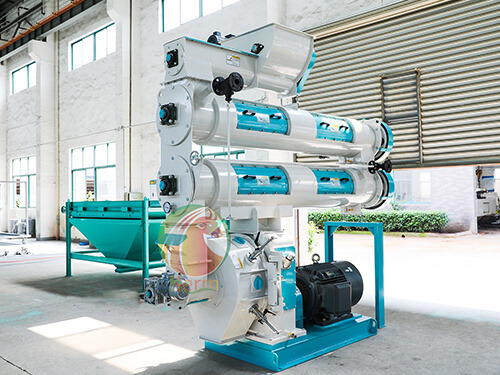
View On WordPress
0 notes
Text
Animal Feed Making Machine
We have the best deals for Animal Feed Making Machine at Indian Trade Bird. We are the leading manufacturer, supplier and exporter of Animal Feed Making Machine like Biomass Machine, Pelleting Machine 20HP, Bar Feeder Machine, Cattle Feed Plant, Poultry Feed Plant, Cattle Feed Mixer Machine, Hammer Mill Feed Grinder, Feed Mixer Machine and many more are available. A animal feed making machine is also called a animal feed maker, where they can be used to make animal feed from other animals. The feed machines are animal feed machines and animal feeders in large-scale, small-scale, and home animal feed making machines. Our Animal Feed Making Machine are highly demanded in the market due to their optimum efficiency, utility, and durability. The machines manufactured is assembled from the top quality component and advanced technology. These machines are highly beneficial as it provides complete automation, excellent performance, high production rates, and the best quality production.
0 notes
Text
How does it ensure uniformity and consistency of feed pellets?
Ensuring uniformity and consistency of feed pellets is crucial for maintaining the quality and effectiveness of animal feed. Here are several key steps and methods used in the industry to achieve this:
Raw Material Quality Control: The first step is to ensure that the raw materials used to make feed pellets are of high quality and consistent. This includes checking for moisture content, particle size, and nutritional value.
Proper Mixing: Before China Bucket Elevator pelleting, the ingredients must be thoroughly mixed to ensure a homogeneous blend. This can be done using various types of mixers, such as ribbon mixers or paddle mixers, which help in achieving a uniform distribution of all components.
Pellet Mill Settings: The settings on the pellet mill, such as die size, hole shape, and ring die compression ratio, are critical. These settings must be adjusted to produce pellets of the desired size and density.
Moisture Content: The moisture content of the feed mixture is a critical factor in pellet quality. Too much or too little moisture can lead to poor pellet quality. It is usually adjusted to a range that allows for good binding and durability of the pellets.
Temperature Control: During the pelleting process, the temperature must be controlled to ensure that the feed does not overheat, which can affect the nutritional value and the physical properties of the pellets.
Cooling and Drying: After pelleting, the feed pellets are cooled and dried to remove excess moisture and to harden the pellets, which helps in maintaining their shape and consistency.
Quality Checks: Regular quality checks are performed throughout the process. This includes testing the hardness, size, and nutritional content of the pellets to ensure they meet the required standards.
Automation and Monitoring: Modern feed pellet production lines are often automated with sensors and monitoring systems that can detect variations in the process and make adjustments in real-time to maintain consistency.
Batch Control: Keeping track of batches and ensuring that each batch is processed under the same conditions helps in maintaining uniformity across different production runs.
Storage Conditions: Proper storage conditions are also important. Feed pellets should be stored in a dry, cool place to prevent clumping and degradation of quality.
By following these steps and continuously monitoring the process, feed manufacturers can ensure that the feed pellets they produce are uniform and consistent, providing the best possible nutrition to animals.
0 notes
Text
Agriculture Equipment Manufacturers in India | Farm Equipment |Garden Equipment - Vinglob Greentech

Agriculture Equipment Manufacturers in India | Farm Equipment| Garden Equipment — Vinglob Greentech
Agriculture Equipments
Vinglob Greentech also provides services to the agricultural business on a significant scale. Modern tools/machines are employed in the agriculture field as technology advances.
Farming Equipments
Farm machinery is available to satisfy the demands of farming operations.Identifying the various types of farming machinery you may require to make your operations more efficient can be frustrating.
Gardening Equipments
We offer our clients a wide range of Garden tools under Garden Tools Category. Made using sophisticated technology, we offer these at competitive prices.
Quality Assurance
We provide Quality product for all kind of equipments. Giving 100% quality to our clients is our primary motto
OUR PRODUCTS
1. AGRICULTURE-SPRAYER
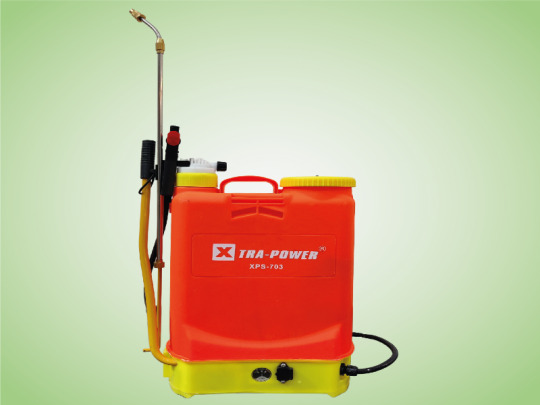
2.ANIMAL FEED PALLET MACHINE
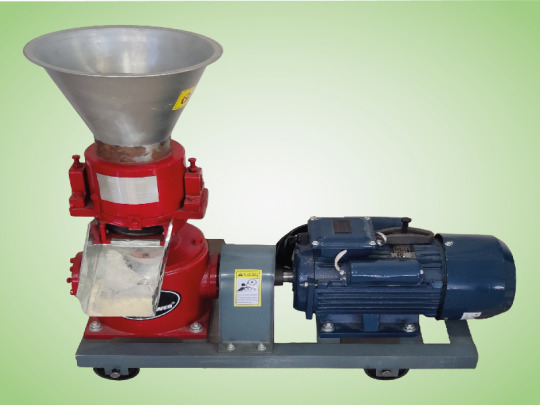
3.Brush Cutter:

4.Chaff Cutter:
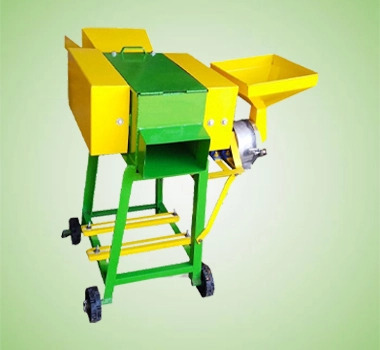
5.CHAIN-SAW:

6.Fogging Machine:

7.HOSE-PIPE:

8.GARDEN EQUIPMENTS:

9.HTP-Pump:

10. MANUAL AGRICULTURE MACHINE:
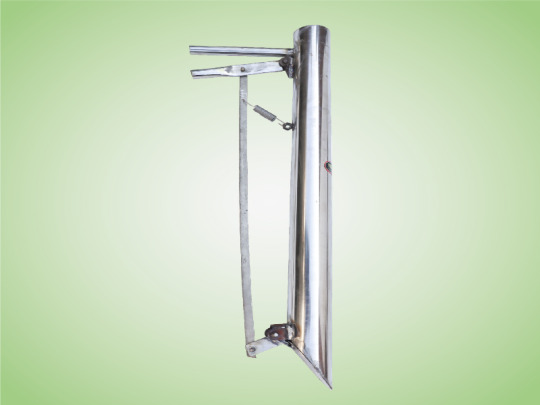
11. Milking Machine:

12.Rice Transplanter:
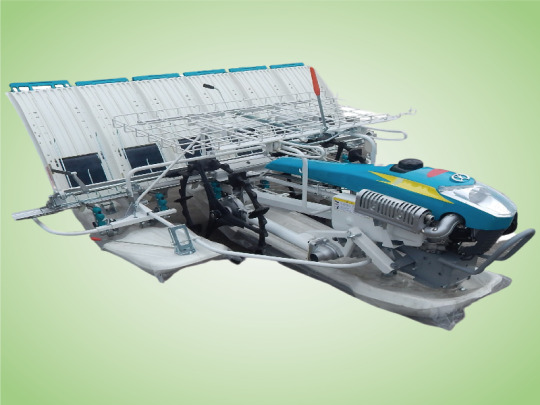
13.MINI RICE MILL MACHINE:
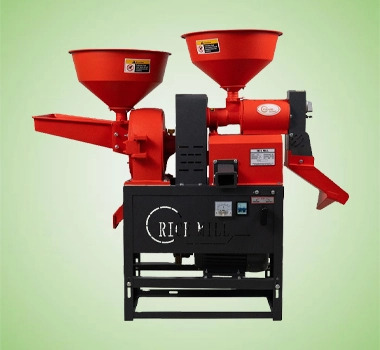
14.Power Reaper:

15.Power Weeder:

16.Soil Auger:
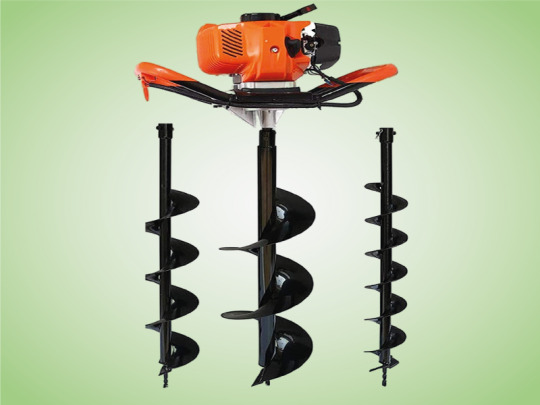
17.SEED DRILL:

18.Vacuum Cleaner:
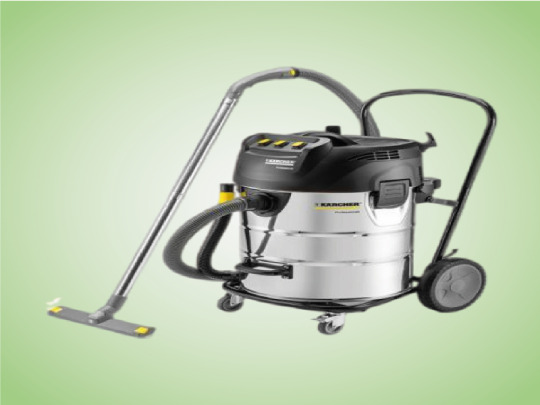
Vinglob Greentech - Agriculture Equipments Manufacturers and Exporters.
Established in the year 2016, Ahmedabad, (Gujarat, India), We “Vinglob Greentech (I) Pvt Ltd” are engaged in Manufacturers and Exporters of Agriculture Equipments, Power Weeder, Power Reaper, Manual Agricultural Machinery, Garden Equiments, Animal Feed Pellet Machine, Agriculture Sprayer, Vacuum Cleaner, Hose Pipe, Chain Saw, Fogging Machine, Milking Machine, HTP-Pump, Soil Auger, Mini Rice Mill, Brush Cutter, Seed Drill, Chaff Cutter, High Pressure Washer, and Rice Transplanter etc. We are a Limited Private Company and we source products from the reliable market which can be availed from us at reasonable prices.We achieve this because we believe in providing quality not just the first time, but every time.
Useful Links
About us
Our Team
Media
Media
Contact Us
Site
Popular Products
Power Weeder
Chain Saw
Garden Tools
Agriculture Sprayer
Soil Auger
Contact Us
A/2, Bharat Small Industrial Estate,
B/H. Gujarat Offset, Vatva, Ahmedabad,
Pin Code :- 382445
+91-798-403-0141 | +91-990-979-3721
https://www.vgtindia.in/
#"Agriculture Equipment Manufacturer#Agriculture Equipments Supplier#Best Farming Equipments#Manufacturer
0 notes
Video
youtube
Feed Pellet Milling Machine in Action: Enhance Your Production Process #...
0 notes